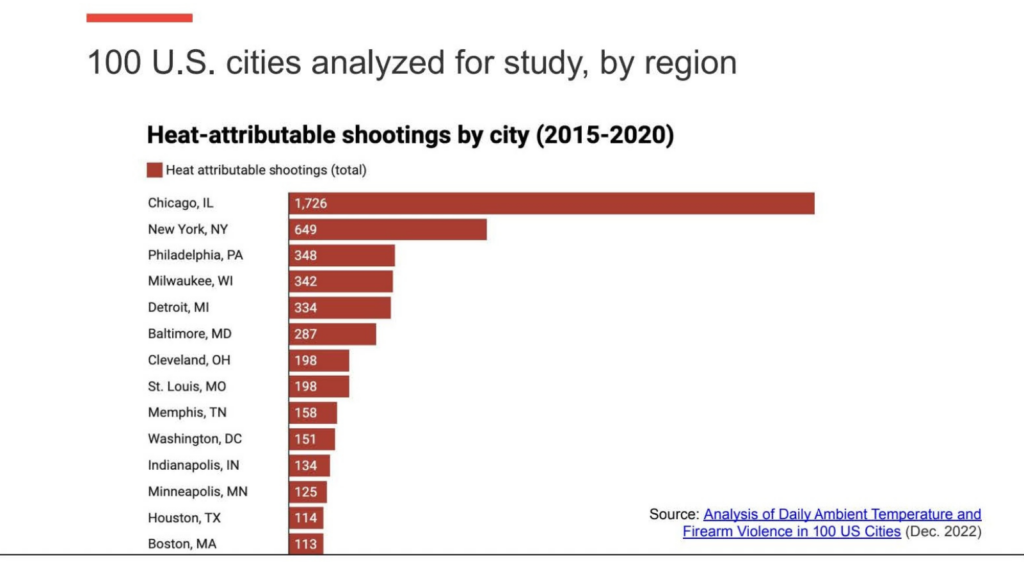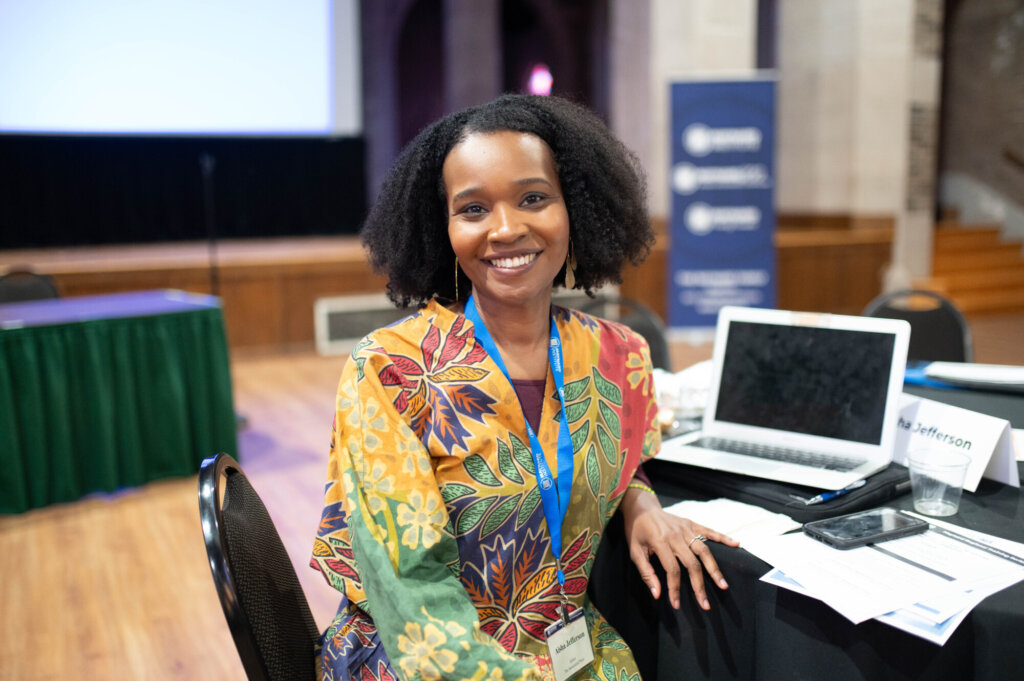On Tuesday, July 30, nearly 100 journalists from across the country gathered virtually to focus on an emerging research topic: the connection between gun violence and rising temperatures. With Earth’s hottest day recorded the previous Monday, the subject could not have been more timely.
Training: Data for Journalists Covering Climate Change and Gun Violence – co-presented by the Maynard Institute for Journalism Education and the Society of Environmental Journalists – featured guest speakers Helina Selemon and Aaron Glantz.
This event was particularly special to Maynard’s network of program alumni. Selemon is an alumna of the Maynard 200 Fellowship, and her research grew out of her Maynard 200 Fellowship project, which received a national Solutions Journalism Award as an investigative story linking extreme heat with gun violence.
Glantz served as Selemon’s mentor, and the Maynard 200 Fellowship’s Investigative Storytelling Executive-in-Residence.
The Maynard Institute’s co-executive director, Martin G. Reynolds gave a brief welcome address at the start of the training.
“I am deeply appreciative of this work and this project and we hope that this information can be useful as you think about how to cover gun violence and climate change across our nation,” said Reynolds.

Parsing the Data by City
Using a spreadsheet data set compiled for this training and based on analysis from Boston University’s RISE Lab and the University of Washington’s Firearm Injury and Policy Program and using data from NASA’s North American Land Data Assimilation System and the Gun Violence Archive, Selemon illustrated the link between rising above-average daily temperatures and increases in gun violence nationwide.
Selemon presented this stark statistic: Higher-than-normal temperatures, on average, can be attributed to nearly 7% of all shootings in the U.S. (or 7,973 total shootings).
“Here’s what we know: there’s a relationship between higher than normal average temperatures and shootings. We can attribute nearly 7% of all shootings in the U.S. to higher than average temperatures. It’s almost 8,000 total shootings,” Selemon said. “These percentages vary by city. But in New York it’s double that. That’s where I’m based.”
Helena Selemon, Maynard 200 Fellowship alum, reporter for Amsterdam News’ Blacklight investigative unit.

The training provided local reporters across the country with access to exclusive local data on the amount of gun violence linked to climate change in each of the United States’ 100 largest cities – from Akron, Ohio to Winston-Salem, North Carolina – as well as the percentage of shootings where elevated heat is a factor and the most dangerous day for gun violence linked to climate change for each US city.
The research also suggests that the top 10 cities with the most gun shootings related to extreme heat were Chicago, New York City, Philadelphia, Milwaukee, Detroit, Baltimore, Cleveland, St. Louis, Memphis, Washington, D.C., Indianapolis, Minneapolis, Houston, and Boston.
One surprising finding: several cities seemed to have less shootings during hotter days – those cities included Baton Rouge, Phoenix, and Los Angeles, based on data from 2015-2020.
Coverage resulting from this training
Selemon encouraged journalists to reach out to researchers for more information and to localize data for their audiences. Since the presentation, two stories have been published using this data model as the foundation for their reporting in the New Jersey Monitorand the Rochester Democrat and Chronicle. She also focused part of the presentation on finding local initiatives that combat rising temperatures, including greening efforts.
- “Summer Heat Worsens Gun Violence, Study Finds,” New Jersey Monitor, August 5, 2024, by Dana DiFilippo.
- “Rochester, NY: Gun Violence and Summer Heat,” Democrat & Chronicle, August 2, 2024, by Steve Howe.
- “Research confirms what authorities have known — more get shot when it’s hot,” Buffalow News, September 2, 2024, by Justin Sondel.
Training Recording and Resources
For journalists who were unable to attend, we have compiled 5 resources and next steps you can take below.
- Watch the Zoom recording. Helina Selemon and Aaron Glantz walk through the data step-by-step and discuss how to search and sort the data for your region. Watch at: bit.ly/training-zoom-recording-heat-guns Passcode: 3K+h#qmL
- Review the slide deck and Q&A doc. Download your PDF copy of the slides that contain the mandatory citation for the data as well as additional links to office hours, interviewees and more at: bit.ly/training-slides-links
For your convenience, we also compiled the training’s Q&A in a separate PDF here. bit.ly/training-FAQs - Dive into the data set. Make a copy of the Google spreadsheet here: bit.ly/data-heat-guns
- Share your story. Complete this google form and we will help promote your story on our social media channels. bit.ly/mije-sej-stories
- Subscribe and join to stay informed. Don’t miss out on future trainings! Subscribe to the Maynard Institute for Journalism Education. Join the Society of Environmental Journalists . Visit SEJ’s website and the next steps and resources page for covering heat-related gun violence.
About the Society of Environmental Journalists
The Society of Environmental Journalists is the only North American membership association of professional journalists dedicated to more and better coverage of environment-related issues. SEJ’s mission is to strengthen the quality, reach and viability of journalism that advances public understanding of environmental issues.
About the Maynard Institute for Journalism Education
Since 1977, the Maynard Institute has fought to push back against the systemic lack of diversity in the news industry through training, collaborations and convenings. The Institute promotes diversity and antiracism in the news media through improved coverage, hiring and business practices. We are creating better representation in U.S. newsrooms through our programs , which gives media professionals of color and those of diverse backgrounds the tools to become skilled storytellers, empowered executives and inspired entrepreneurs.
Get in touch to learn more about what we do and how we can help

Your support matters
Donating to MIJE helps newsrooms and professionals improve their reporting, workplaces, and the communities they serve.
